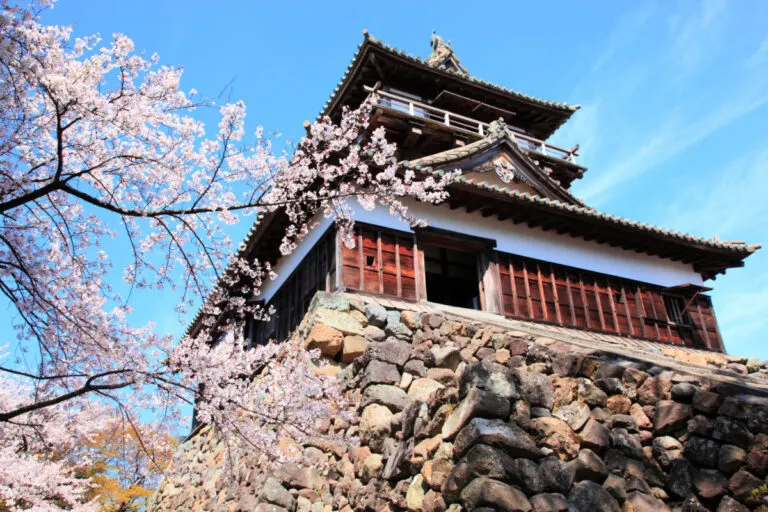While it’s common knowledge now that travel is back with a bang, there’s one destination in particular that seems to have secured its place on every bucket list and “best destinations” index.
I’m talking about Japan, of course, the iconic Asian country beloved for its breathtaking temples, ultra-advanced cities, and spectacularly beautiful nature destinations.
Tourist favorites like Kyoto, Osaka, and Tokyo never cease to be trendy.
With surging tourist arrivals, the country has recently introduced new regulations to prevent negative impacts from potential overtourism.
But even with all the hype around this beautiful nation, there still remain regions that have slipped under the radar and feel off the beaten path.
Chances are you’ve never heard of the Fukui prefecture in Japan–and neither have most people, which means you’ll enjoy fewer tourists at cultural attractions and more solitude in nature.
The Fukui region may not be a household name like Tokyo, but it is full of awe-inspiring highlights like must-try fresh Echizen crab dishes, crumbling ruins, ancient temples, and Maruoka Castle, one of the twelve original castles of Japan.

The New Bullet Train Launch Makes It Easier To Visit Fukui Prefecture Than Ever Before
Japan’s lightning-fast and undeniably efficient shinkansen (bullet) trains make getting around the country quick and easy.
And as of March 16th, the highly anticipated 78-mile addition to the previous Tokyo-Kanazawa route is officially open.
This extension connects the Fukui prefecture to the rest of Japan via bullet train, making it easier than ever to explore the lesser known region.
The shinkansen’s new service will run 14 round trips per day between Tokyo and Tsuruga, which takes just over 3 hours to reach from Japan’s capital.
Prior to this launch, there was limited express train service connecting these cities, but the new bullet train cuts an hour off the travel times and provides a new, direct connection.
So, what makes this hidden region worth visiting?

Authentic Zen Buddhism Temple Experiences
If wandering through a peaceful, active monastery and ornate temple complex tucked away in the forest sounds like a dream to you, the Eiheiji Temple is a place you won’t want to miss.
Nestled in the forested hills outside the city of Fukui, this 12th-century temple can be explored in the afternoon and is one of the two head temples for Soto Zen Buddhism.
Eiheji is made up of 70 individual buildings connected by walkways and can be easily reached by direct bus from Fukui station; it takes 30 minutes and will cost 750 yen.

The Land of Dinosaurs
Another key attraction of the region is the Fukui Prefectural Dinosaur Museum, which is located in Katsuyama.
Fukui earned its nickname of the country’s dinosaur capital for a good reason–80% of all the dinosaur fossils in Japan, including 5 new species, were found here.
With 4 floors, animatronic dinosaurs, and some 40 skeletons, four of which are made entirely from original bones, this fascinating museum is one of the best in its category.

Rugged Sea Cliffs
A quick adventure from Fukui station will land you at the 10 million-year-old rock formations of Tojinbo Cliffs in Echizen Kagakaigan Quasi National Park
Travelers craving a nature fix can head here for an epic sunset over the Sea of Japan, reveling in the unique beauty of the rocky columns and honeycombed formations carved by the ocean.
A short hike from the sea cliffs is Oshima Island, easily reached by a lovely pedestrian bridge that can’t be missed.
This tiny serene island is navigable by hiking paths and home to a beautiful forest shrine that is well worth a visit when exploring the area.

Relax In The Hotsprings Of Awara
If you’ve got the time and are craving a traditional Japanese spa experience, taking the new shinkansen to Awara is a great addition to a trip.
This city is renowned for its mineral-rich hot springs, which visitors can soak in, as well as the traditional ryokan inns.
Aside from its appeal as a wellness destination, Awara also boasts the Kanaz Forest of Creation.
This unique art exhibition spans a 200-meter forest and features site-specific art installations and sculptures interspersed with nature.
Visitors can also take hands-on workshops to learn glassblowing, ceramics, and other craft forms.
Whether you want to visit Fukui as a day trip or add a few days to your itinerary to experience all the prefecture has to offer, this hidden gem is a must-see before it becomes popular!

Credit: Source link

